Subscribe to ShahidulNews
Coal Climate Showdown in Bangladesh

Musings by Shahidul Alam

Tushikur Rahman, a second year student of the three year BA programme in photography at Pathshala South Asian Media Academy, was yesterday announced as one of the 10 photographers from across the world who have been short listed for the 2011 Sony World Photography Awards Student Focus competition.
Tushikur’s short listed images have triumphed over hundreds of images entered from around the world into the world’s one of the most high profile student photography programme and award, says a press release issued from London yesterday.
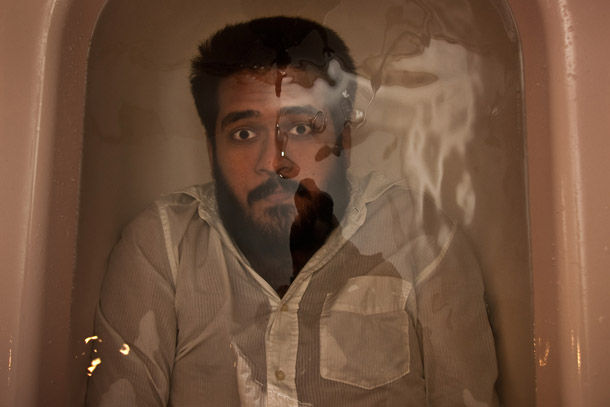
Being shortlisted, Tushikur has two parts to his prize. Firstly, his image will be exhibited as part of the Sony World Photography Awards Exhibition at Somerset House in London and secondly, he will be flown to London in April to take part in the World Photography Festival London and in the final stage of the competition.
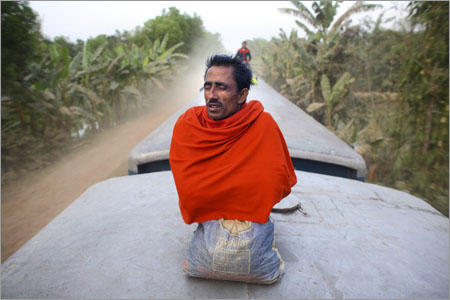
A vicious cyclone had struck the night before. Dawn, stillness. A calm and eerie light. I tagged behind my older brothers as they ventured out, gazing in awe at a neighbouring house, its roof had flown off, while scenes of devastation lay around us with trees uprooted, branches severed from trunks, debris lying in the middle of the road. Fragments of a childhood memory.
As news of death and destruction poured into our home, so did groups of radio artists?singers, musicians?and many others, all working for the Chittagong radio station, like my father, a journalist, who worked in its news section.
By midday we were out in the streets, singers and musicians at the front, the rest behind, two rows of men, women and children, holding on to the corners and edges of a white billowing bedsheet. As the long procession wound down major roads, pedestrians turned around at the sound of singing, reaching for their pockets as we drew nearer. Women and girls peered at us, while boys were sent out, clutching notes, or a handful of coins (in those days, coins mattered). As the hours passed, the chador no longer remained taut; heavy with cash offerings, it sagged in the middle.
We trooped home. Instructed to separate coins from banknotes, we kids worked feverishly as my mother busied herself in rustling up some food for the sudden influx of guests. Neatly laid out piles of banknotes, tottering columns of coins. My father and his colleagues counted, double-checked. The money was sent off to aid cyclone victims. It was 1965. It was Chittagong. We belonged to Pakistan.
The central seat of power, Islamabad, was far away. It was (still) possible for state functionaries and artists to come together. To take to the streeets spontaneously, aroused by community feelings of helping people in distress. An event that was not orchestrated. No heads had rolled. Had cameras clicked? No, not that I remember.
Fast forward to now. Natural disasters. Large cheques are donated to the prime minister’s relief fund. Banks. Multinational mobile phone companies. Business associations. Civil society. NGOs. Smaller cheques too, a day’s salary of government employees, of private firms. An extended hand offers a cheque, as the other accepts, both faces turn toward the TV cameras, toward the photojournalists. The state-capital-media nexus, although riven by internal disagreements and rivalries, work collectively to manufacture national interests. A far cry from earlier times when broadcasting and telecasting space was controlled by state-owned Radio Bangladesh and Bangladesh Television, when 5-10 regular privately owned dailies, and a film industry, not known for signs of originality, was all that there was. Before things began changing in the 1990s.
Market reforms however, began earlier, Ziaur Rahman (1975-1981) and Hussain Mohammad Ershad (1981-1990) used them as instruments to build and maintain political coalitions, particularly with traders and industrialists. Economic liberalisation programmes, traded off for garnering the political support of business elites, did not, as Fahimul Quadir points out, contribute to the micromanagement of the economy, nor to the advancement of human development goals.?Instead, they allowed big business to emerge as a major player in national decision-making. Not unsurprisingly, contradictions emerged?it adversely affected the state’s ability to enforce contracts, to develop a mechanism for redistributing assets?but these were ignored by the military rulers as the issue of gaining legitimacy among civilian sectors was far more pressing.
Despite General Ershad being ousted from power in 1990, subsequent regimes, led by Khaleda Zia and Sheikh Hasina, treaded earlier paths, smoothed by undisclosed contributions to party coffers, far more important than improving the living standards of the majority. These patterns are similar to those in Philippines, president Marcos, US ally and long-time friend, was deposed in 1986 through a popular uprising, but despite his ouster, many, if not most, of the “fundamental relations of exploitation,” remained intact. Democracy was “nominally restored” while the masses continued to suffer, writes Jonathan Beller; prostituted Filipinas became overseas Filipino workers (OFWs), radicals continued to be murdered, giving lie to a particular fantasy about the importance of individuals (autocrats are deposed, but the system does not get dismantled).
Ceaseless political party bickering which has characterised politics in Bangladesh for the last two decades, has benefited media corporatisation’s ideology, “impartial” and “neutral” news journalism has been redefined as that which is independent of political party allegiances, distracting attention from the fact that corporate media works to further corporate interests, to create a consumer culture, to advance the interests of market forces (Fahmidul Huq). Not surprisingly, there have been other contradictions as well. As Zeenat Huda Wahid notes, Khaleda Zia’s new media policy in 1992 initiated satellite television, leading to scores of Indian channels being available to Bangladeshi viewers. Despite, Huda argues, the BNP government’s crafting of a religio-territorial identity, one that was portrayed as resistant to Indian domination. ?Or, as Meghna Guhathakurta writes (1997), Sonar Bangla, the rallying cry of the liberation struggle?evoking images of classlessness, prosperity, peaceful agrarian relations?was not only abandoned by the Awami League post-1971, it has become “fossilised.” Sheikh Hasina’s government (1996-2001; 2008 onwards) has not veered from liberalisation policies initiated by previous governments, including those which are her sworn enemies, the BNP-Jamaat alliance that ruled the nation (2001-2007); the present government’s proclamation of Muktijuddher pokkher shokti is shorn of Shonar Bangla ideals, as fundamental relations of exploitation remain. Intact.
The culture industry’s victory lies in two things, “what it destroys as truth outside its sphere can be reproduced indefinitely within it as lies.” We can no longer simply talk of control, writes Sefik Seki Tatlic, we must talk of the nature of the interaction between one who is being controlled and the one who controls.?Of how the one that is “controlled” is asking for more control over him/herself while expecting to be compensated by a surplus of freedom to satisfy trivial needs and wishes. Of how the fulfillment of trivial needs is declared as freedom. Readers, remember, RC Cola, freedom of choice? Or, remember Grameen Phone’s current slogan, Stay Close, invoking family ideology (security, warmth, intimacy, support, romance) to further corporate profits (Stay Close so that we can fleece you?). Consumer freedom, Tatlic reminds us, implies as well the freedom to choose not to be engaged in any kind of socially sensible or politically articulated struggle. Very true in the case of Bangladesh, for one does not see media celebrities, singers, actors and actresses, writers, playwrights, intellectuals, advertising industry’s geniuses etc etc, those who froth at the mouth at the slightest mention of 1971, lend support to any of the pro-people struggles and movements current in Bangladesh, two of the foremost being the garments workers struggles for living wages and safe and secure workplaces, ?and, the Phulbari peoples struggle to not be uprooted from their land and livelihood, to resist the impoverishment which multinationals, and the government (both present and past) have destined for them.?Life is so much more comfortable for the ruling class and its functionaries when Muktijuddho gets divested of Shonar Bangla ideals, when fundamental relations of exploitation can, and do, remain intact.
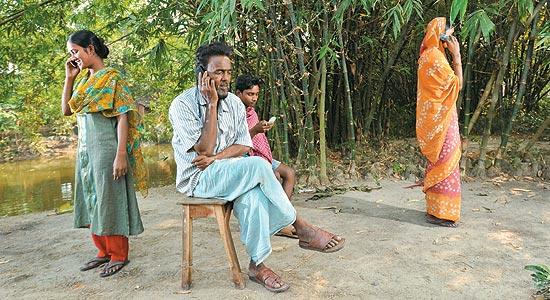
The category of the “spectacle” is the medialogical paradigm, says Beller, as the accumulation of capital becomes an image (think of all the commodities advertised), and again, as “the diplomatic presentation of hierarchical society to itself.” The spectacle is not merely a relation, but a relation of production for it produces consciousness. We must put language on images, he writes. Excited by Beller’s theory, I return to YouTube to watch Shahrukh Khan’s performance in Dhaka (I missed when it was shown live on TV), where Dhaka crowds, who had paid exorbitant amounts to purchase tickets, were said to have been bowled-over by the mega-star’s performance.?A few voices have expressed their disgust at the “vulgarism,” ?at the “obscenity,” at his cultural arrogance, his condescending attitude toward the Bangladeshi audience, at his oft-repeated use of a “slang” word (not written by those who felt offended, I had to go to great trouble to discover it). Shala! Now, shala is a kinship term, used by the husband to indicate his wife’s brother. Gentrification has led to `shaylok‘ being preferred over shala, and I have yet to find a Bengali able to explain why it offends. The answer lies in its underlying message, embedded in patriarchal power relations, deeply sexualised, “I f..k your sister.”

The diplomatic presentation of hierarchical relations between India and Bangladesh as the BSF, the Indian border forces, kill Bangladeshis randomly, systematically? The King Khan tamasha made us forget the truth that lies outside the sphere crafted by the culture industries. Shala is a patriarchal lie, it must be dismantled.
Published in New Age, Monday February 21, 2011
![]()
While Bangladesh might be the minnows in test cricket. In the field of photography, Bangladesh has carved a space for itself. Former students of the prestigious Joop Swart Masterclass, GMB Akash, Andrew Biraj, Munem Wasif and Saiful Huq Omi are amongst the finest photographers around today. Abir Abdullah, a student of the first World Press Photo seminar series in 1998, was a member of the international jury this year.
The international jury of the premier contest World Press Photo,?is considered the UN of photojournalism.?Its accolades are coveted by photographers across the world. Shahidul Alam, who has been a juror on four occasions, is the only Asian to have chaired the international jury, ?Besides these Pathshala photographers, Shafiqul Alam Kiron, a photographer from the MAP agency has also been a winner in the past.
Andrew Biraj was also a winner (3rd Prize) in the Daily Life category this year, with the following image:
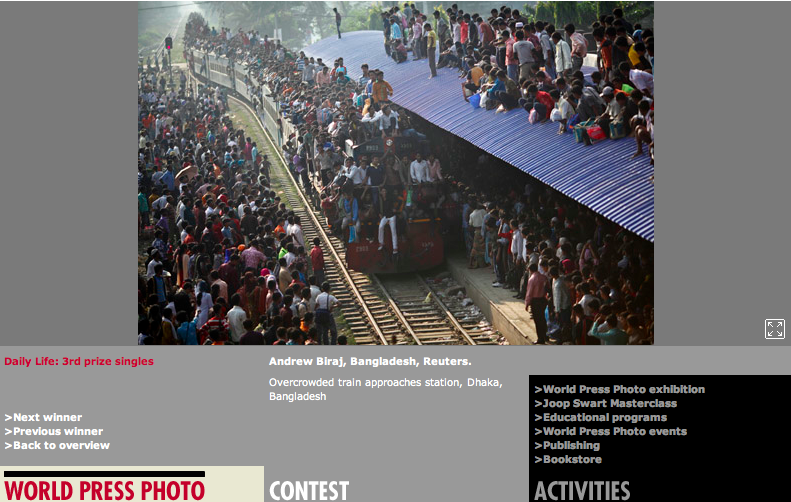
The results of the 54th annual World Press Photo Contest were announced during a press conference at the Boekmanzaal in the Amsterdam City Hall, Amstel. This year again a record number of photographs with 108,059 images were submitted by 5,847 photographers. The photographers represent 125 different nationalities.
The members of the jury were:
Chair
? David Burnett, USA, photojournalist and founding member Contact Press Images
Members
? Abir Abdullah, Bangladesh, photographer EPA and vice principal Pathshala South Asian Media Academy
? Vince Aletti, USA, freelance critic
? Koji Aoki, Japan, chief photographer Aflo sport / Aflo dite and president Aflo Co., Ltd.
? Peter Bialobreszki, Germany, artist
? Harry Borden, UK, photographer
? Giovanna Calvenzi, Italy, picture editor Sportweek / La Gazzetta dello Sport
? Marizilda Cruppe, Brazil, photographer O Globo / Eve Photographers
? Ruth Eichhorn, Germany, director of photography Geo
? Renata Ferri, Italy, photo editor Io Donna – Corriere Della Sera
? Heinz Kluetmeier, USA, photographer Sports Illustrated
? Mattias Klum, Sweden, photographer and filmmaker
? H?ric Libong, Cameroon, head of photo department Panapress
? Enric Mart?, Spain, regional editor AP for Latin America and Caribbean
? Wim Melis, The Netherlands, curator Noorderlicht
? Terence Pepper, UK, curator of photographs National Portrait Gallery
? Sujong Song, South Korea, independent curator and photo editor
? Sophie Stafford, UK, BBC Wildlife Magazine
? Aidan Sullivan, UK, vice president photo assignment Getty Images
Secretaries
? Daphn? Angl?s, France/USA, European picture coordinator The New York Times
? Stephen Mayes, UK, managing director VII Photo Agency
Former student Andrew Biraj, is currently a teacher at Pathshala The South Asian Media Academy
Kazi Imtiaz Hossain Abir, a student of higher secondary level at the Northern College at Mohammadpur was killed in a so called “Cross Fire” in the capital. Apart from ‘why’ he was killed the question is now where Abir was killed?
There are inconsistencies in the documents related to Abir’s extrajudicial killing. The police submitted a “Death Certificate” with its forwarding placed before the Chief Metropolitan Magistrate Court of Dhaka through the Deputy Commissioner (Prosecution), a police officer, of the Metropolitan Court. The Death Certificate was issued by Dr. Nurul Islam of the National Institute of Trauma and Orthopedic Rehabilitation (NITOR) of Dhaka. It does not assert the cause of death although it mentions that “there is a penetrating injury on the medial aspect of the right lower thigh about (2cm X 2cm)”.
This differs from the police report by the Investigating Officer (IO) Sub Inspector (SI) Mr. Hekmat Ali in both the age and time of death. More significantly the report states that he was sent for treatment of his bullet wounds.
While the entire document was composed in a computer, the crime scene was penned, in all three cases.
So where was Abir killed?
The Pallabi police filed three cases against Abir naming him as the accused with four-five unidentified persons. FIR no. 27 sates that the a police patrol team went to Balurmath area, when they came across indiscriminate gunshots. They immediately returned fire in self-defence. All the “terrorists” fled the scene and hid in darkness. They found one critically-injured person, who was bleeding at the time from his bullet wounds. He was holding a revolver in his right hand. The person told the officers his name as “Abir (28)” before losing consciousness. The police took signatures from the three “witnesses” on the seizure list. They claim that ASI Ismail and constable Saidur were injured (without any details about their injuries) and received first aid from “Adhunik Hospital”, which referred them to the Rajarbag Police Hospital for further treatment.
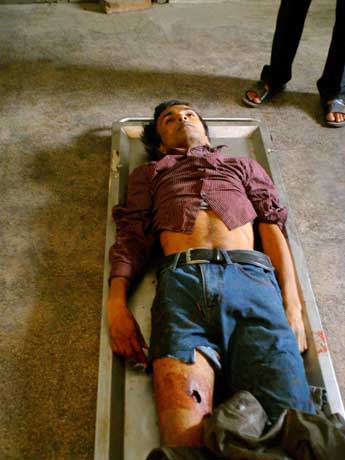
FIRs no. 28 and FIR no. 29 were made in the same language by SI Md. Yasin Munshi and SI Md. Ezajul Islam, using identical text but under different sections of the Penal Code-1860. Professionals related to the forensic examination of dead bodies told the human rights defenders that the shot fired at Abir’s right thigh had been done at close range.
Abir’s relatives said that Abir’s cell phone has not been returned to the family and is not included in the seizure list. They did not even register a complaint regarding the extra judicial killing, asking instead ?have authorities ever prosecuted any personnel of the law-enforcement agencies despite the fact that a large number of innocent persons have been murdered?? They argued that there are a number of wanted criminals in the city whom the people want to see behind bars. They want legal action against the police who have failed to arrest them for years. They demand answers as to why an innocent student, who did have not a single complaint against him with any police station or court of the country, should be killed and publicized as a robber. Does the government ever feel how deeply shocked and infuriated people are about these lawless murders by the government’s own agents?
Even recently the prime minister has spoken out against extra judicial killings. The foreign minister has said extrajudicial killing have become almost part of the system and it cannot be changed overnight.
The Home Minister Sahara Khatun in public blamed human rights organizations for “siding with the criminals” and claimed that no extra-judicial killing has taken place during the tenure of the present government.
Also available at countercurrents
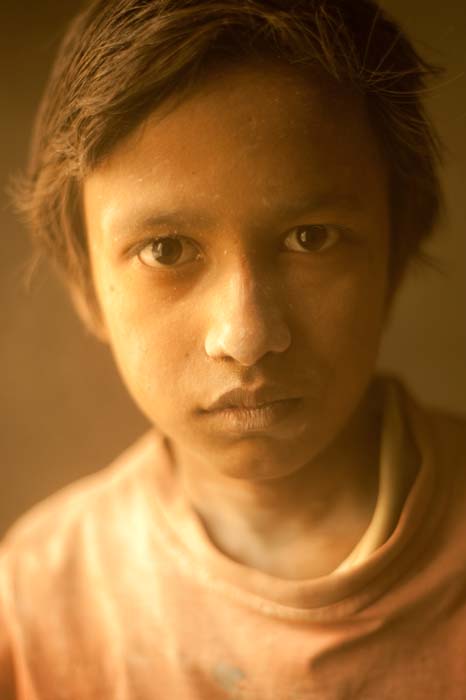
First of all, I would like to thank all 26 of the students in this workshop for being willing to undertake hard labor and endure pressure to push limits, break boundaries and grow. If have been critical in the beginning, it was because of my own passionate belief that they could succeed at a level they might not themselves imagine. I feel a responsibility to give them this opportunity to concentrate on what is most important, and to discover the joy in that hard, demanding work.
I am very happy that they now understand that photography is about self-discovery. I am pleased, and they should be pleased, about this wonderful work. This is their moment, and they should enjoy every bit of it.
A special thanks to Shehab, who has been very important in helping this to succeed.
Morten Krogvold
January 2011
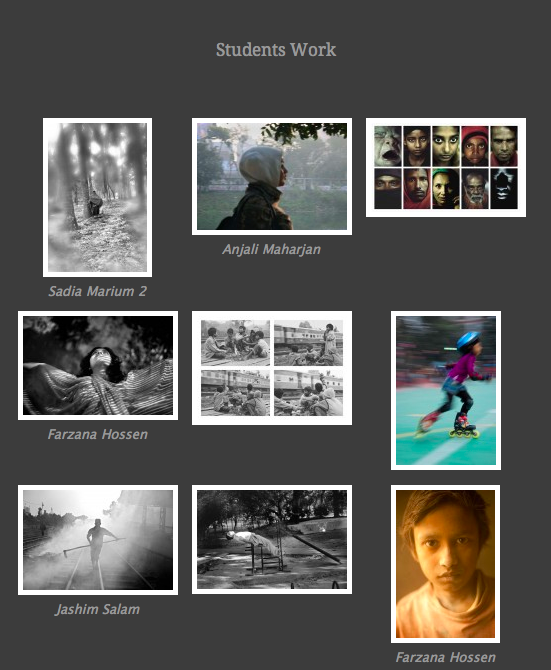
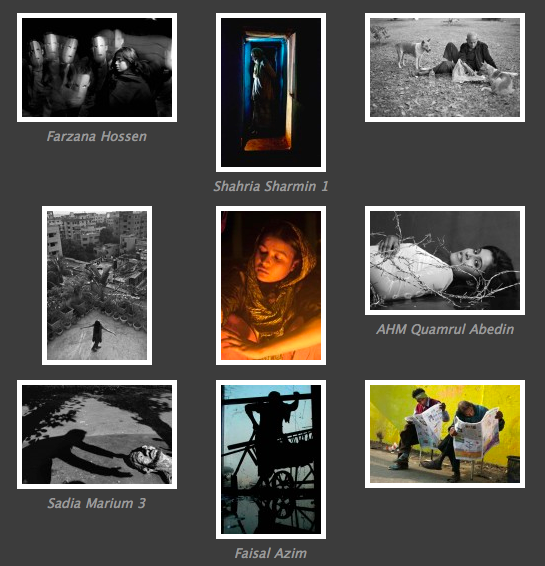
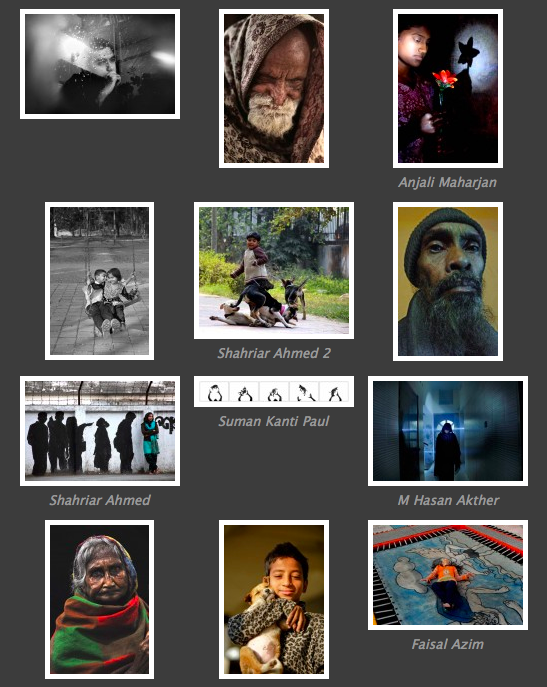
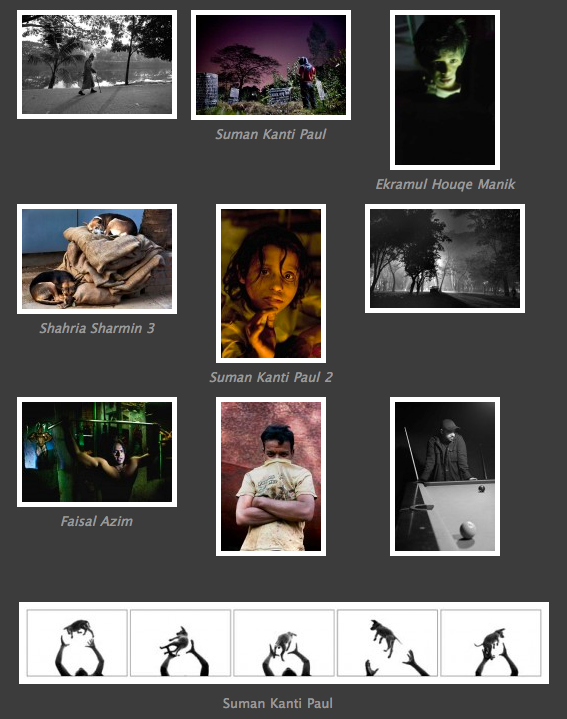
?
Can a formal bilateral communiqu? be a ?game changer?, foretell a ?paradigm shift?, in a Southasian relationship? If India and Bangladesh manage to follow through on promises to open up their economies for transit and trade as set out in a memorandum of January 2010, a new era could dawn across the land borders of Southasia. The challenges are bureaucratic inertia in New Delhi and ultra-nationalist politics in Dhaka.
The political partition of the Subcontinent in 1947 did not have to lead to economic partition, but that is ultimately what happened. This did not take place right away, and many had believed that the borders of India and Pakistan?s eastern and western flanks were demarcations that would allow for the movement of people and commerce. It was as late as the India-Pakistan war of 1965 that the veins and capillaries of trade were strangulated. In the east, in what was to become Bangladesh just a few years later, the river ferries and barges that connected Kolkata with the deltaic region, and as far up as Assam, were terminated. The metre-gauge railway lines now stopped at the frontier, and through-traffic of buses and trucks came to a halt. The latest act of separation was for India to put up an elaborate barbed-wire fence along much of the 4000 km border, a project that is nearly complete. Today, what mainly passes under these wires are Bangladeshi migrants seeking survival in the faraway metropolises of India ? and contraband.
 |
| Photo credit: Sworup Nhasiju |
Continue reading “Connectivity: The India-Bangladesh land bridge”
It was a welcome opportunity to meet Prime Minister Sheikh Hasina during her official visit to the UK. Three of us, Lord Eric Avebury of the UK House of Lords, Brad Adams of Human Rights Watch and I met the Prime Minister on 30 January at her hotel suite in London.
Bangladesh Foreign Minister, Dr Dipu Moni and the Bangladesh High Commissioner to the UK, Dr Sayeedur Rahman Khan were also present at the meeting.
We began with a discussion on the war crimes trials, restrictions on human rights groups visiting Chittagong Hill Tracts, and the continued delay in implementing the Chittagong Hill Tracts Accord (CHT) that was signed in 1997 during Sheikh Hasina?s previous tenure as Prime Minister.
The Prime Minister said she was committed to implementing the CHT Accord and had set up a committee to advise her on how to implement it.
The Foreign Minister said the government was aware of the concerns the International Bar Association had raised about the law under which war crimes will be tried. She said the government had sought the opinion of legal experts on those concerns and that the amended law incorporates their advice. She said the process is to heal wounds, and the government is looking at all issues in relation to the trials, and the rule of law would be followed.
The law denies, among other things, the right to challenge the jurisdiction of the Tribunal and the right to the possibility of bail but it was not clear if the government would move to amend the law.
I told the Prime Minister that Amnesty International welcomes the government?s move to make the National Human Rights Commission permanent and asked for her assurances that it would remain independent and well resourced. Also, the government?s move to try Bangladesh Rifle mutineers in civilian courts, as against courts martial, was welcome.
I expressed concern that the government?s move to address some of the human rights concerns appear to favour only members of her own party, the Awami League. There is a long, unwelcome legacy in Bangladesh for governments to go soft on the criminal activities of members of their own party and harsh on the opposition. I asked why the only known cases of the government pardoning death penalty convicts were 20 convicts, 19 of whom were members of the governing Awami League. I also expressed concern about the activities of the Bangladesh Chattra League (BCL), the student wing of the Awami League, and the serious allegations of human rights abuses by this grouping, which have gone unpunished.
The Foreign Minister said the deaths sentences had been politically motivated and for that reason the prisoners have been pardoned. I was dismayed as I had hoped to hear a commitment to pardoning more death penalty convicts and the exercise of utmost impartiality in choosing who to pardon.
The Prime Minister said she had taken action against the BCL members. Some have been arrested for committing crimes and some have been expelled from the Awami League.
I explained that torture continues to be widespread and asked the Prime Minister if her government would consider implementing the 2003 Supreme Court ruling that provides guidelines for torture free investigation of suspects. This question remained unanswered.
I referred to statements the Prime Minister had made before and after the 2008 elections that extrajudicial executions would end. Yet, they continue and nothing seems to be done to stop them.
The Prime Minister said extrajudicial executions have been happening since 2004 and she has been very vocal on the issue from that time. She said they could not stop overnight. She said all incidents are investigated, and if any officer is found to have committed a crime ?immediately we take action against it?.
I agree that extrajudicial executions cannot stop overnight, but work to stop them can begin straight away. While the Prime Minister?s comments generate the hope that the government might be prepared to address the issue, the Home Minister?s comments last week that extrajudicial executions were not happening undermines that hope.